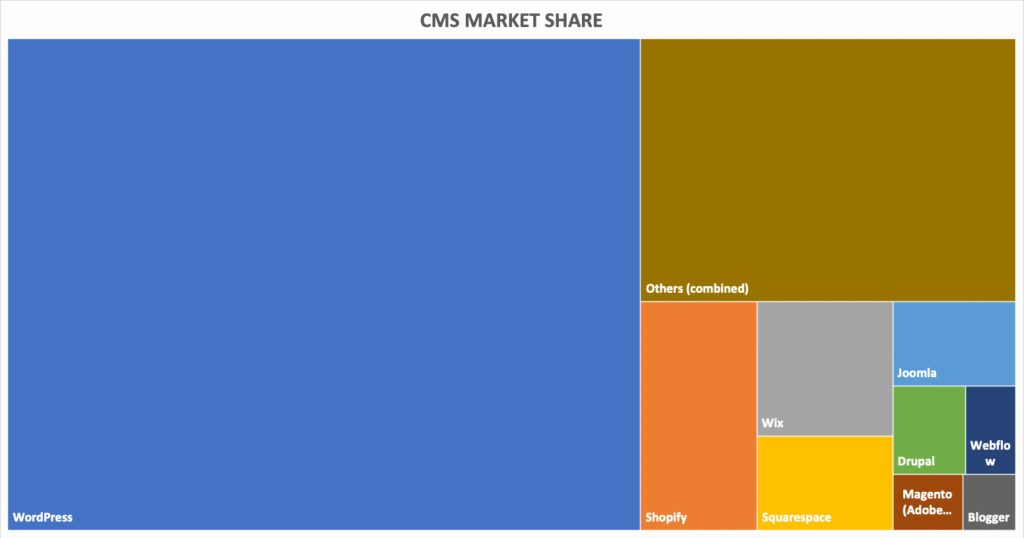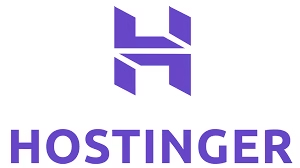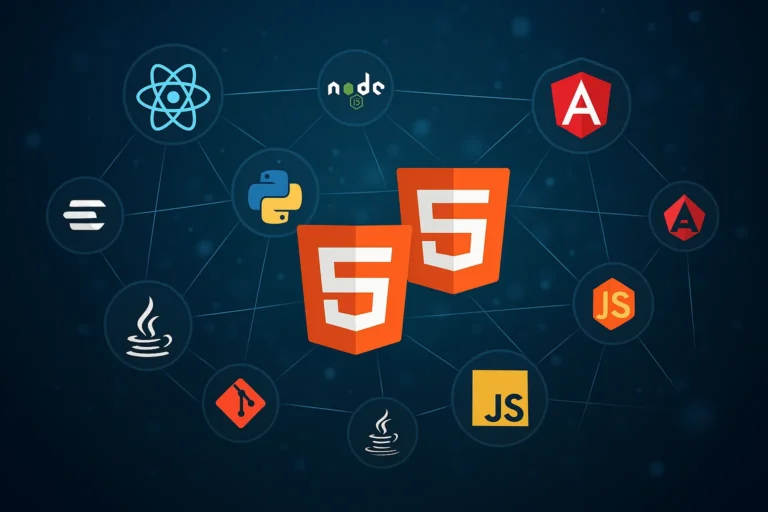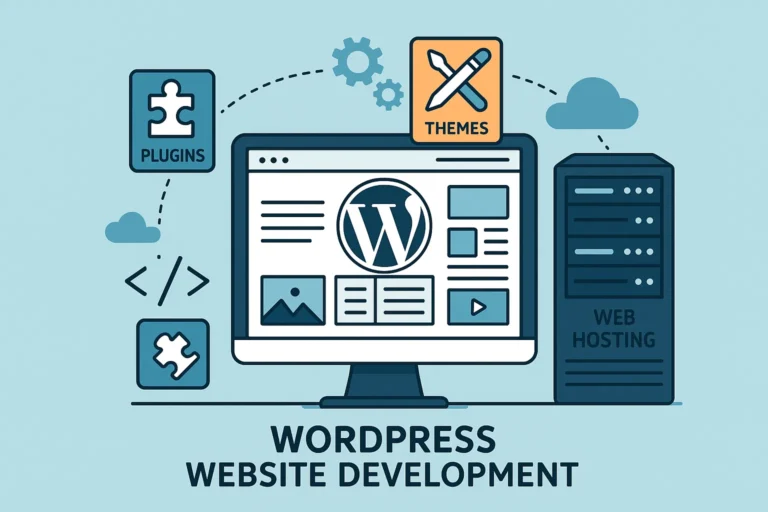In the digital age, websites are not a luxury—they are a necessity. Whether for personal blogs, small business storefronts, or enterprise-level applications, the backbone of most modern websites is a Content Management System (CMS). CMS platforms allow users to manage digital content with minimal technical expertise. Among the wide array of CMS options available, WordPress stands out not only as the market leader but also as the most beloved tool in the industry.
This article delves into the current market share of content management systems and explores why WordPress continues to dominate and captivate users in both the content management and web application space.
Understanding Content Management Systems (CMS)
A CMS is software that facilitates the creation, editing, organisation, and publishing of digital content. Typically, CMS platforms provide a graphical user interface, making it easier for non-technical users to manage websites without coding knowledge. Some of the most common CMSs include WordPress, Joomla, Drupal, Shopify, Wix, Squarespace, Magento, and Webflow.
There are two primary types of CMS platforms:
- Open-source CMS: Freely available software that allows extensive customisation (e.g., WordPress, Joomla, Drupal).
- Proprietary CMS: Paid or subscription-based software with limited flexibility but often more support (e.g., Shopify, Wix).
CMS Market Share in 2025
As of 2025, WordPress continues to dominate the CMS market with an impressive market share. Here’s a breakdown of the current landscape:

These figures highlight how WordPress dominates the competition, powering more than 43% of all websites on the internet (not just CMS-powered ones). These figures are nothing short of magical.
The CMS market share data presented above is primarily derived from W3Techs one of the most reliable and widely cited sources for web technology usage statistics.
Historical Growth Trends
WordPress began in 2003 as a simple blogging tool. Over the years, it has evolved into a powerful CMS and application framework. While other platforms like Joomla and Drupal enjoyed popularity in the mid-2000s, WordPress steadily rose in usage thanks to its intuitive interface and extensibility.
In contrast, Joomla and Drupal have seen declines in usage due to their steeper learning curves. Meanwhile, platforms like Shopify and Wix have grown but remain far behind WordPress in overall market penetration.
Why WordPress is the Most Loved CMS
Looking at the above statistics & historical growth, it would not be wrong to say that WordPress is the most loved platform in 2025 & will remain a strong player if it continues to focus on innovation. However, one may wonder why the platform is so loved compared to its peers!
The following may be some of the key reasons for the platform being so popular.
Open-Source and Free
WordPress is completely free to use and open-source. This means anyone can download, install, use, and modify it to suit their needs. This openness has fostered a vast global community of developers and users who contribute themes, plugins, and updates.
Unmatched Flexibility and Customisation
With over 60,000 free plugins and thousands of themes available in the WordPress repository, users can build virtually any type of website—from blogs and portfolios to e-commerce stores and learning management systems.
Ease of Use
The WordPress dashboard is intuitive and user-friendly. Even non-tech-savvy users can quickly learn how to publish posts, manage media, and customise themes.
Scalability for All Sizes
WordPress is used by both small bloggers and multinational corporations. Sites like BBC America, The Walt Disney Company, and Sony Music all rely on WordPress.
Vibrant Community Support
The WordPress community is enormous and active. Forums, blogs, YouTube tutorials, and dedicated websites offer support. Additionally, regular WordCamps and meetups around the world foster collaboration and innovation.
SEO Friendliness
WordPress is built with SEO in mind. It allows users to easily manage metadata, URLs, alt tags, and content structure. Plugins like Yoast SEO and Rank Math further enhance a site’s visibility.
Strong Security Infrastructure
WordPress is frequently updated to address security vulnerabilities. With proper configuration, hosting, and plugins like Wordfence or Sucuri, WordPress can be as secure as any proprietary CMS.
E-commerce Capabilities (WooCommerce)
WooCommerce, the leading e-commerce plugin for WordPress, powers over 25% of all online stores. It provides extensive options for payment gateways, inventory management, and product customisation.
Multilingual and Multi-site Support
WordPress supports multilingual sites via plugins like WPML and Polylang. Its multisite feature allows users to manage multiple websites from a single installation.
Regular Updates and Modernisation
The WordPress core team regularly releases updates that improve performance, security, and user experience. Recent updates have introduced features like full site editing and Gutenberg blocks, enhancing the design experience.
WordPress in the Web Application Space
WordPress is no longer just a CMS; it has evolved into a full-fledged application framework. Developers can use WordPress to build complex web applications using REST APIs, custom post types, and advanced hooks/filters like
- Learning Management Systems (LMS): Using plugins like LearnDash or TutorLMS.
- Membership Portals: Through tools like MemberPress or Restrict Content Pro.
- Online Marketplaces: With multi-vendor plugins and WooCommerce.
- Job Boards and Directories: Built using custom post types and advanced search.
This versatility makes WordPress a go-to choice not just for content but also for robust, scalable web applications.

Challenges and Criticisms
While WordPress is widely loved, it’s not without its drawbacks:
- Plugin Overload: Excessive plugins can slow down a site and introduce conflicts.
- Security Risks: Being open-source and popular makes it a frequent target. Poor hosting or outdated plugins can lead to vulnerabilities.
- Learning Curve for Developers: While easy for beginners, customising WordPress deeply can be challenging for developers unfamiliar with its architecture.
- Performance Optimisation: Requires manual optimisation for speed (caching, image compression, etc.).
Despite these issues, the benefits far outweigh the drawbacks for most users.
Competitive Analysis: WordPress vs. Other CMSs
While all the following CMS are great in their own space. It’s worth highlighting some of the key advantages & disadvantages for the reader’s benefit.
WordPress vs. Shopify
- Shopify is great for e-commerce, but lacks customisation freedom.
- WordPress + WooCommerce offers more flexibility and lower long-term costs.
WordPress vs. Wix/Squarespace
- Wix and Squarespace are easy to use but limited in flexibility.
- WordPress provides complete control and expandability.
WordPress vs. Joomla/Drupal
- Joomla and Drupal offer more control to developers but have steeper learning curves.
- WordPress balances ease of use with customisation power.
The Future of WordPress
WordPress is not slowing down. The introduction of Full Site Editing (FSE), Gutenberg blocks, and better mobile optimisation indicates a continued focus on improving user experience and staying competitive.
The growing ecosystem of managed WordPress hosting providers (like WP Engine, Kinsta, Hostonger and SiteGround) also makes it easier to scale WordPress without technical headaches.
Additionally, WordPress is adapting to the headless CMS trend, enabling decoupled architecture via REST and GraphQL APIs, making it appealing to modern JavaScript frameworks like React, Vue, and Next.js.
Our Thoughts
In a crowded CMS landscape, WordPress reigns supreme—and for good reason. With an impressive market share of ~60%, a strong community, unmatched flexibility, and continuous evolution, WordPress is not just a tool for bloggers but a platform for enterprise websites, web applications, and everything in between.
Its balance of ease, power, and adaptability makes it the most loved CMS on the planet. Whether you’re a solo entrepreneur or an enterprise CTO, WordPress offers the tools, freedom, and scalability needed to bring digital visions to life.
As web development continues to evolve, one thing is clear: WordPress isn’t just keeping up—it’s leading the way.
These are not just my own views, in fact, most of them are backed by data. However, please feel free to share your thoughts..









3 comments
Pavan Singh
I have been working for the last 20 years in the industry & seen the ups & downs. There are platforms picked up rapidly & faded away as well. However, 2015 onwards, rather in the last 5 years, I have seen the steady growth of WP, which is remarkable. Now I am full-stack on WP. Hope they keep the pace & continue to improve the platform.
Anyways, nice article & detailed…Good work dude 👌
Dhruv Kumar
Nice Article. Completly agree with your thoughts. I am on board